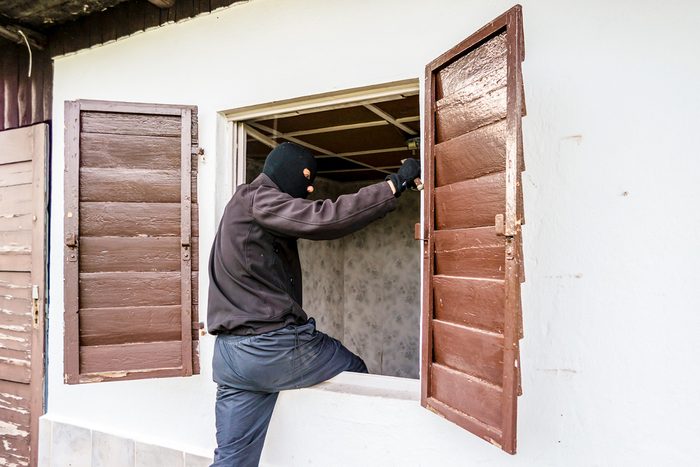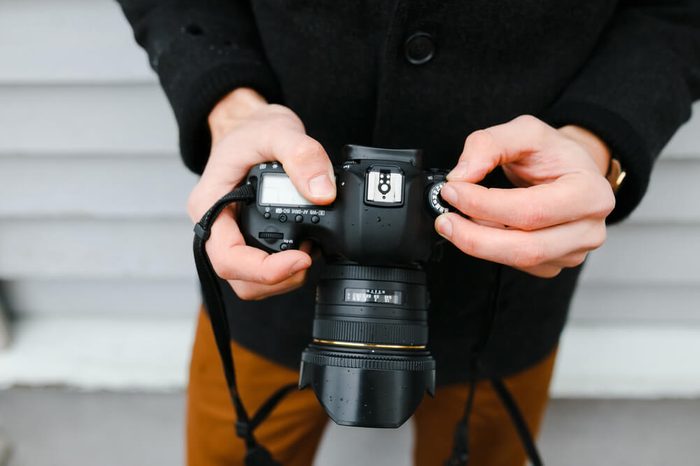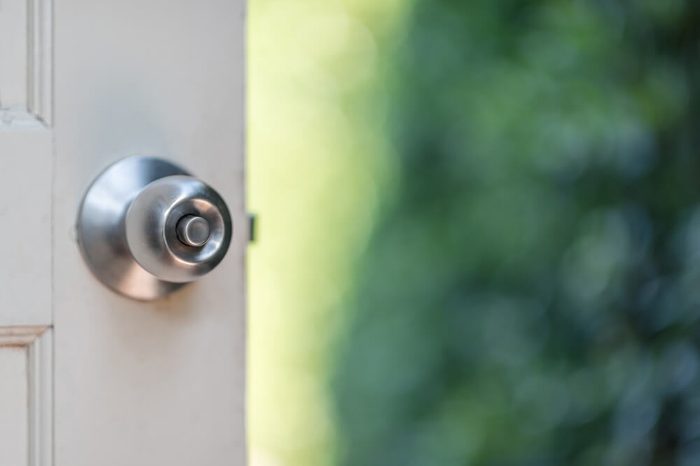Before a break-in happens, there are often red flags. Learn the expert-backed signs your house is being marked for robbery—and what to do next.

13 Sneaky Signs That Your House Is Marked for Burglary


A broken window
Some criminals will throw a rock through a house or car window before even trying to break in, just to see what happens, says Logan. If an alarm goes off and neighbors peer outside to see what’s happening, they might be scared off. But if the homeowners are clearly out of the house or the police never arrive, they might break in that night or soon after. Call the police right away if you’re home, and install motion-sensor floodlights for when you aren’t there, Logan says.

A strolling stranger
You probably don’t know everyone in your neighborhood, but a criminal scoping out the area likely won’t just look like an innocent walker. If someone is walking by repeatedly, check their body language, says Logan. “If you take your dog for a walk, you just walk around the neighborhood. You’re not always checking behind you or looking over your shoulder,” he says.
Pay attention to clothing too. Most people taking a walk for the sake of fitness will be wearing workout gear, so someone in plain clothes who’s out for long periods of time might be up to no good, adds Stern. Any time you’re feeling uneasy, call the police, he suggests. It’s better to bring them out of their way for a bit than to regret ignoring the warning signs.

An eager photographer
Beyond just looking jumpy, someone watching your home might also be taking pictures. They’ll document hiding spots and how close the houses are together—less space between houses means more chance a neighbor will spot them, says Stern.
If you notice strangers acting fishy with their cameras, defend yourself by taking your own picture of them, Logan recommends. “You might get into an argument, but if there’s a person with bad intentions, taking a picture of him is a good chance of scaring them off,” he says.

Sudden light bulb problems
“Lights are burglars’ enemy,” says Logan. “In lights, they can be seen.” A thief who’s planning to break in might unscrew the bulbs around your house so they don’t turn on and reveal the burglar. Check the bulbs if your lights stop working suddenly. If they’re unscrewed but aren’t burned out, a crook might be scoping your home.

A vehicle that keeps driving by
You don’t need to question every unfamiliar car that drives by, but take note if one passes your house over and over. One with an out-of-state license plate or no plate at all could signal someone is there to watch your neighborhood, especially if the passengers park the car and don’t get out. Write down the license plate number (if there is one), get a description of the driver or the number of people in the car and call the police if you’re suspicious, says Logan.

Missing trash
A stolen identity can be more valuable than some jewelry and cash. “A lot of burglars won’t enter a home,” says Stern. “They’ll start stealing your trash.” From there, they’ll rummage around for documents containing your Social Security number, birthday and other clues for stealing your identity, along with what type of job you have or when you’ll be going on vacation.
Don’t wait to see signs that your house is marked; always shred any papers before chucking them to make it harder for crooks to put the pieces together, says Stern.

Untouched mail
An observant criminal will take note when there’s a pile of newspapers or letters building up in front of your house. “When you’re on vacation, that’s a telltale sign you’re not there,” says Stern. When you’re away, ask a neighbor to pick up your papers, pamphlets and anything else signaling no one is home, he suggests.

A missing dog
An alert, barking dog is the last thing a burglar wants when trying to break into your home. If a thief has been marking your home and is set on getting in, he or she will let the dog out well before attempting the break-in.
“Then they go back in a week or the next day and know the dog isn’t going to alert the neighbors or homeowners,” says Logan. A runaway dog isn’t always the fault of a criminal, but people with bad intentions will use the strategy from time to time.

An empty gas tank
If you could have sworn your gas tank was still half full when you got home last night but notice the gas meter is near the zero mark this morning, there’s a chance a determined burglar drained your tank with a hole or a tube the night before. Now, the thief can watch you leave for work, then enter your home without worrying about when you’ll be back. After all, it’s pretty much a guarantee you’ll be stopping for gas first.

A moving truck
Criminals rely on the fact that people don’t always know much about their neighbors. While a homeowner is on vacation, they might park a U-Haul in the empty driveway—after all, they would have taken the car on their trip—then load up without being questioned, says Stern.

Social media posts
Snooping crooks are just one more reason to worry about internet security and privacy. “Burglars are using social media now to gather intelligence,” says Stern. “When people post information about their home or a Christmas party, they show different parts of the home or layout.” Especially on image-based platforms like Instagram or Snapchat, robbers could get a sense of where your valuables are to make an efficient theft.
Also avoid posting about your vacation until you’re home. Publicizing the fact that you’ll be away for two weeks—leaving your house unattended—opens the door for burglars to feel confident about breaking in.

Door-to-door visits
Of course, some religious groups and salespeople ring the doorbell with innocent intentions. But some criminals also pose as them to get a look at the inside of your house. Pay attention to how they present themselves. “You talk to them, and they don’t know much about the product, or they’re looking around the house more than trying to sell the vacuum cleaner,” says Logan. Your best bet is to play it safe and not open the door, says Stern.
Ideally, you’d have a security camera and audio system set up so you can see who’s outside your door and communicate with them without opening up. If you don’t, just shout out the door that you aren’t interested, suggests Stern.

A new cleaning person
If you have a cleaning team or other crew that visits frequently, a new person could be a red flag. Burglars might pay off people with access to your house to find out what’s inside, and some might even convince the team to let them pose as part of the crew, says Stern. He recommends calling the company and asking who the person is and why he or she is there.
If the company doesn’t recognize the name you mention, it could be one of the subtle signs that your house is marked for robbery, a tactic buried deep in the list of burglar secrets thieves hope you never find out.
About the expert
|
Why trust us
At Reader’s Digest, we’re committed to producing high-quality content by writers with expertise and experience in their field in consultation with relevant, qualified experts. We rely on reputable primary sources, including government and professional organizations and academic institutions as well as our writers’ personal experiences where appropriate. We verify all facts and data, back them with credible sourcing and revisit them over time to ensure they remain accurate and up to date. Read more about our team, our contributors and our editorial policies.
Sources:
- Everett Stern, intelligence director at Tactical Rabbit
- Joel Logan, CEO of Reliance Security


















